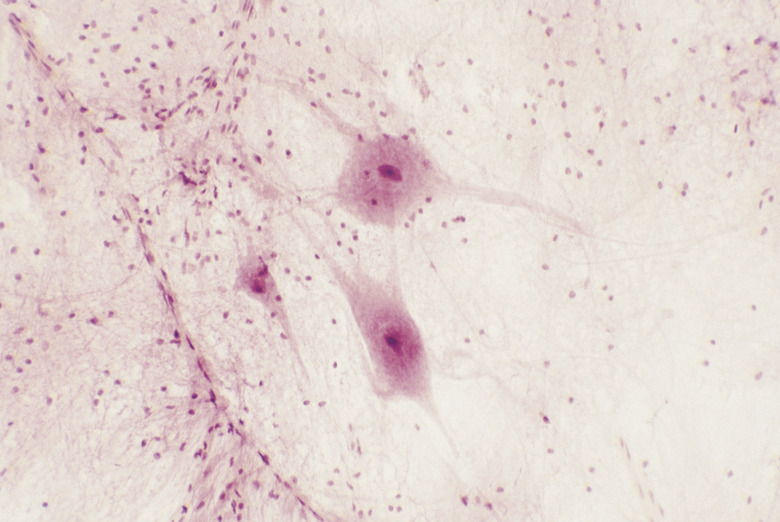Differences Between A Neuron & A Neuroglia
Neurons are the nerve cells of your nervous system, while neuroglia (often just called glia) are supporting cells that play auxiliary roles. If the neurons are like the communications network for your body, then the glia are the infrastructure that helps to keep that communications network functioning and in place. The differences in their functions are reflected by some basic structural differences.
Neurons
Neurons
Unlike glia, neurons have projections called axons and dendrites. The axons act as cables to carry outbound signals to other cells, while the dendrites accept inbound signals. Moreover, unlike glia, neurons generate signals called action potentials that travel down the axon to the synapse, a junction between an axon and a postsynaptic cell. At chemical synapses, chemicals called neurotransmitters are released to transmit the message to the postsynaptic cell, while at other "electrical" synapses channels between the two cells convey the electrical signal directly into the postsynaptic cell.
Myelination
Myelination
While glia do not transmit messages directly themselves, they play supporting roles in this process. In your central nervous system, glia called oligodendrocytes wrap sheaths made of a material called myelin around the axons of your neurons, thereby speeding up the rate at which action potentials can travel down the axon. In the peripheral nervous system, so-called Schwann cells are substituted for the oligodendrocytes found in the CNS, but they still play a similar role.
Astrocytes
Astrocytes
Other glia called astrocytes help to regulate the amounts of neurotransmitter and ion concentrations outside your neurons. They can release neurotransmitters under some circumstances, even though they do not transmit action potentials. They play an important part in formation of the blood-brain barrier, the barrier that controls entry of substances from the bloodstream into the brain, and cause blood vessels to dilate when nearby neurons are active so that the active neuron can get the oxygen and sugar it needs. They also provide structural support for neurons.
Other Glia
Other Glia
Your nervous system features a few other important types of glia. Microglia are the immune system of your brain and central nervous system. While the blood-brain barrier helps to protect the brain from exposure to most invaders, if any should happen to make their way in, your microglia will destroy them. Ependymal cells form the lining around the ventricles of the brain and the central canal of the spinal cord, both of which are filled with cerebrospinal fluid. Ependymal cells have wavy hair-like projections called cilia that help to keep this fluid circulating properly.
References
- "Biology"; Neil A. Campbell, et al.; 2008
- "Clinical Microbiology Reviews"; Role of Microglia in Central Nervous System Infections; R. Bryan Rock, et al.; 2004
- "Essential Cell Biology"; Bruce Alberts, et al.; 2004
Cite This Article
MLA
Brennan, John. "Differences Between A Neuron & A Neuroglia" sciencing.com, https://www.sciencing.com/differences-between-neuron-neuroglia-10011824/. 24 April 2017.
APA
Brennan, John. (2017, April 24). Differences Between A Neuron & A Neuroglia. sciencing.com. Retrieved from https://www.sciencing.com/differences-between-neuron-neuroglia-10011824/
Chicago
Brennan, John. Differences Between A Neuron & A Neuroglia last modified March 24, 2022. https://www.sciencing.com/differences-between-neuron-neuroglia-10011824/
